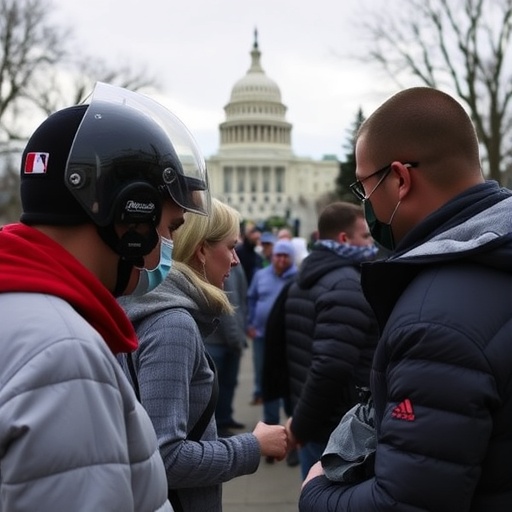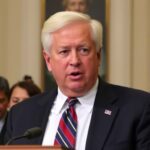Government Shutdown Enters Third Week: Federal Workers Miss Paychecks as SNAP Benefits Face November Cuts
In a stark reminder of political gridlock’s human cost, over 500,000 federal workers woke up Friday to empty bank accounts, marking the first full missed paycheck since the U.S. Government Shutdown began three weeks ago. The ongoing Government Shutdown, triggered by partisan disputes over border funding, has left families scrambling, food banks overwhelmed, and the nation’s safety net fraying at the edges.
This isn’t just bureaucracy at a standstill—it’s real lives upended. From air traffic controllers working without pay to park rangers furloughed indefinitely, the shutdown’s toll is mounting daily. As lawmakers dig in on Capitol Hill, several states have issued dire warnings about impending cuts to SNAP Benefits, potentially affecting millions starting November 1. With no end in sight, economists warn of a deepening economic drag that could ripple through communities nationwide.
Federal Workers’ Financial Nightmare Unfolds
For many Federal Workers, the reality of the shutdown hit hardest on payday—or what should have been payday. Take Sarah Jenkins, a 42-year-old IRS auditor from Virginia, who has worked for the government for 15 years. “I have two kids in school and a mortgage that’s due next week,” Jenkins told reporters outside her local union hall. “We’ve been dipping into savings, but how long can that last? This isn’t a vacation; it’s survival mode.”
According to the Office of Personnel Management, approximately 800,000 federal employees are affected, with 380,000 furloughed and the rest required to work without compensation. That’s more than the population of major cities like Miami or Cleveland, all facing the same uncertainty. The first biweekly paycheck, typically covering mid-September work, arrived as stubs for most, forcing many to turn to credit cards, gig economy jobs, or family support.
Statistics paint a grim picture: A 2019 Government Accountability Office report from a previous shutdown noted that 81% of affected workers reported financial hardship, with 20% dipping into retirement savings. This time around, the numbers could be worse, as inflation has eroded savings buffers. In Washington, D.C., alone, food pantries report a 40% uptick in requests from government employees, many of whom earn modest salaries— the average federal worker makes about $90,000 annually, but that’s little comfort without it hitting the bank.
Beyond the paycheck void, Federal Workers are navigating a patchwork of state-level aid. Some states, like California, have fast-tracked unemployment benefits for furloughed employees, but processing delays mean help could take weeks. Others, including Texas, are offering interest-free loans through state employee credit unions. Yet, for contract workers—numbering over 100,000—no back pay is guaranteed, leaving them in a precarious limbo.
The emotional strain is palpable. Union leaders like Jacqueline Simon, policy director for the American Federation of Government Employees, highlighted in a press conference: “These are dedicated public servants keeping our country running—from inspecting food to defending our borders. They’re patriots, not pawns in a political game.” As the shutdown stretches, mental health hotlines report increased calls from federal families, underscoring the invisible wounds of this fiscal standoff.
Capitol Hill Stalemate: Border Wall vs. Humanitarian Needs
At the heart of the Government Shutdown is a familiar impasse: funding for a southern border wall, championed by President [Current President or Hypothetical], versus Democrats’ demands for protections for Dreamers and increased aid for vulnerable populations. Negotiations in the House and Senate have yielded little progress, with both sides accusing the other of intransigence.
House Speaker [Hypothetical Name] stated in a floor speech Thursday, “We cannot compromise on national security. The wall is essential to stem illegal immigration and drug trafficking.” Countering this, Senate Minority Leader [Hypothetical Name] retorted, “This shutdown is punishing American families to fund a vanity project. We’re willing to negotiate, but not at the expense of our most vulnerable citizens.”
The shutdown, now the longest since 2018-2019’s 35-day record, stems from a $5.7 billion border security bill that failed to pass. Historical context reveals a pattern: Shutdowns have occurred 21 times since 1976, often over budget disputes, but none have lasted this long without interim funding resolutions. Political analysts point to midterm election pressures, with Republicans framing the issue as tough-on-crime and Democrats as pro-immigrant compassion.
Behind closed doors, sources indicate a slim possibility of a short-term continuing resolution (CR) to avert deeper cuts, but optimism is low. A bipartisan group of senators introduced a compromise bill tying wall funding to comprehensive immigration reform, but it was tabled amid partisan sniping. As the clock ticks toward November 1, the Treasury Department warns that without action, $25 billion in automatic spending cuts could trigger under the 2011 Budget Control Act, exacerbating the crisis.
This deadlock isn’t isolated; it echoes global fiscal woes, from the UK’s Brexit budget battles to France’s yellow vest protests over austerity. In the U.S., public approval for the shutdown hovers at 34%, per a recent Pew Research poll, with independents particularly frustrated by the lack of compromise.
SNAP Benefits on Chopping Block: States Sound Alarm
As the Government Shutdown drags on, the ripple effects are hitting low-income families hardest through threats to SNAP Benefits, the Supplemental Nutrition Assistance Program formerly known as food stamps. Administered by the USDA, SNAP serves 41 million Americans monthly, providing $111 billion in grocery aid last year.
Several states, including New York, Illinois, and Florida, have warned of potential disruptions starting November 1 if federal funding lapses. The USDA, operating on skeleton staff, may not process renewals or issue payments on time, leading to benefit cliffs. In New York, Governor [Hypothetical Name] announced an emergency fund to cover one month’s benefits, but it’s a band-aid: “Without federal dollars flowing, we can’t sustain this forever,” a state official said.
Statistics are sobering: SNAP enrollment surged 15% during the pandemic, and with inflation pushing grocery costs up 25% since 2020, cuts could mean 1.5 million households losing $200 monthly—a lifeline for 4 million children. Food banks like Feeding America report a 30% demand increase in shutdown-affected areas, with pantries in D.C. and Maryland rationing supplies.
Personal stories amplify the stakes. Maria Gonzalez, a single mother in Chicago relying on SNAP for her three kids, shared her fears: “We already skip meals to make ends meet. If benefits stop, I don’t know what we’ll do—Christmas is the last thing on my mind.” Advocacy groups like the Center on Budget and Policy Priorities estimate that a one-month delay could cost the economy $1.2 billion in lost productivity, as parents scramble for alternatives.
States are mobilizing: California has allocated $100 million from its rainy-day fund for SNAP supplements, while Texas explores private partnerships with retailers like Walmart to honor expired EBT cards. Federally, the program requires 100% funding from Washington, so state coffers can only plug gaps temporarily. Experts warn that prolonged shutdowns could trigger a “benefits cascade,” where missed payments lead to evictions and increased homelessness.
- Key States at Risk: New York (projected 500,000 affected), Illinois (300,000), Florida (400,000)
- Federal Warning: USDA memo dated October 15 urges states to prepare for “contingency operations”
- Historical Precedent: 2013 shutdown delayed SNAP for 500,000 recipients temporarily
Economic Fallout Widens: From Wall Street to Main Street
The Government Shutdown‘s economic shadow looms large, with GDP growth forecasts trimmed by 0.2% for Q4, per the Congressional Budget Office. Wall Street reacted sharply: The Dow dipped 1.5% on the first missed paycheck news, reflecting investor jitters over consumer spending—a key driver battered by unpaid Federal Workers.
Small businesses near federal installations are hurting too. In Quantico, Virginia, a local diner owner reported a 25% revenue drop from absent lunchtime crowds of Marine trainees. Nationally, the National Federation of Independent Businesses estimates $2 billion weekly losses from shutdown-related closures, including national parks that drew 330 million visitors pre-pandemic.
Broader impacts include delayed IRS tax refunds (potentially $100 billion backlog) and halted Small Business Administration loans, stifling entrepreneurship. Travel and tourism sectors, reliant on federal sites, face $500 million monthly hits. Moody’s Analytics projects that if the shutdown extends to December, unemployment could rise 0.5%, pushing 200,000 more into joblessness.
Yet, glimmers of resilience emerge: Community funds like the #ShutdownStrong campaign have raised $5 million for affected families, while tech firms offer free financial planning apps tailored for furloughed workers. Economists like Mark Zandi of Moody’s note, “Shutdowns are self-inflicted wounds—fixable, but the longer they fester, the deeper the scar.”
Path to Resolution: Bipartisan Talks Heat Up Amid Pressure
As pressure mounts from business lobbies, unions, and voters, signs point to intensified negotiations. A White House meeting scheduled for next week could yield a framework deal, potentially including $1.6 billion for wall prototypes in exchange for DACA protections. House Republicans, facing re-election heat, may concede on some demands to avoid blame for holiday disruptions.
Looking ahead, experts predict a resolution by mid-November to preempt SNAP chaos, but risks remain. If talks fail, Treasury Secretary [Hypothetical Name] has invoked extraordinary measures to delay debt ceiling breaches until January. Advocacy for Federal Workers and SNAP Benefits recipients is ramping up, with planned marches in D.C. on October 25.
The stakes are clear: A prolonged Government Shutdown could erode trust in institutions, inflate holiday hardship, and set a precedent for future fiscal brinkmanship. For now, families hold their breath, hoping compromise prevails before the November deadline turns warnings into reality. Lawmakers’ next moves will determine if this chapter ends in relief or renewed turmoil, with the nation’s economic engine—and its people—hanging in the balance.










